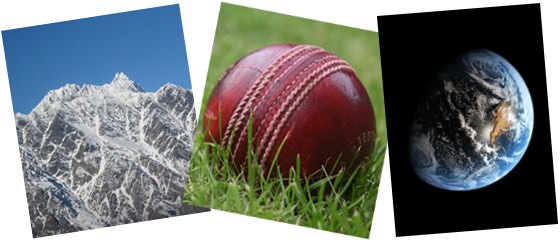 ![[Header]](../XuShared2/Line3.jpeg)

Add a Comment (Go Up to OJB's Blog Page) Image StackingEntry 757, on 2008-04-28 at 21:47:01 (Rating 1, Activities) I did some more astronomy tonight. I'm trying to get my astrophotography technique working a bit better. I'm trying a new technique called "image stacking" where you take many short exposures (I'm doing the tests with 10 exposures of 15 seconds each) and stack the resulting images together using specialised software. I just downloaded the latest version of "Keith's Image Stacker" for my Mac and it does a fairly good job.
Astrophotography isn't easy - even focussing on faint fuzzy blobs is a big challenge. And because the stars, nebulae, galaxies, etc are so faint you need to use long exposures which introduces more problems such as tracking the moving stars and allowing for reciprocity failure and noise in the film or sensor.
The longest exposure I have used is about 20 minutes, but some early astronomers used exposures of several days. Yes, they actually lined up the object, opened the camera shutter for a few hours, closed it again before the Sun rose and repeated the next night after sunset. The skill and precision required is just incredible.
I'm experimenting with photos of the Orion Nebula, which is one of the brighter objects in the sky. But its rapidly disappearing over the western horizon after sunset now, so I will need to swap to something else soon, maybe NGC 3372 (Eta Carinae), which is circumpolar here in southern New Zealand.
I think I have made a good decision buying a fairly modest size 8 inch (20 cm) Celestron because its so quick to set up. When I used bigger 'scopes there was always a major effort involved in dragging it outside and assembling the bits. The C8 is just small and light enough that I can carry the whole 'scope (with equatorial mount) outside without having to disassemble it first. So I do tend to use it a lot more and I'm getting more observing done than before.
 Comment 1 (1441) by Anonymous on 2008-05-04 at 11:59:54:
Sounds interesting but do you have results of imaging for viewing?  Comment 2 (1454) by OJB on 2008-05-21 at 17:00:11:
I'm putting all my observations on line here 
You can leave comments about this entry using this form. To add a comment: enter a name and email (both optional), type the number shown above, enter a comment, then click Add.
Note that you can leave the name blank if you want to remain anonymous.
Enter your email address to receive notifications of replies and updates to this entry.
The comment should appear immediately because the authorisation system is currently inactive.
![[Comments]](../XuShared/Comment1B.jpeg) ![[Preview]](../XuShared/Comment6B.jpeg) ![[Blog]](../XuShared/Up2B.jpeg)
|

![[Comments]](../XuShared/Comment1B.jpeg)
![[Preview]](../XuShared/Comment6B.jpeg)
![[Blog]](../XuShared/Up2B.jpeg)